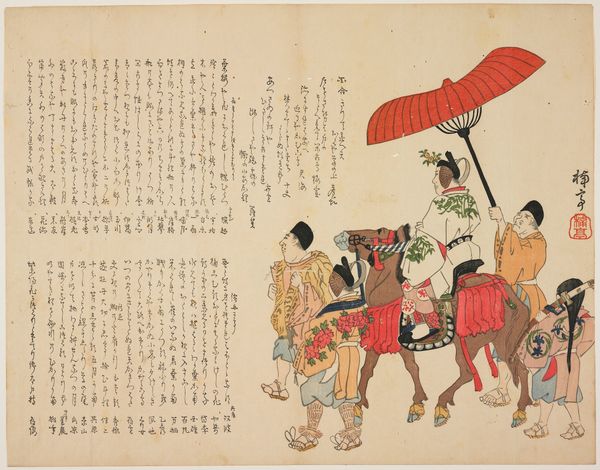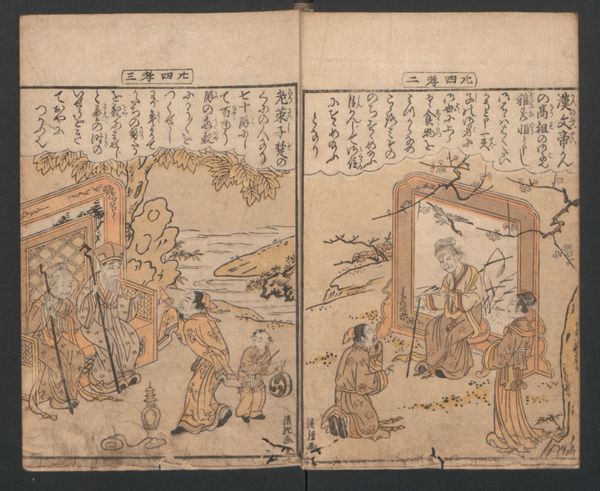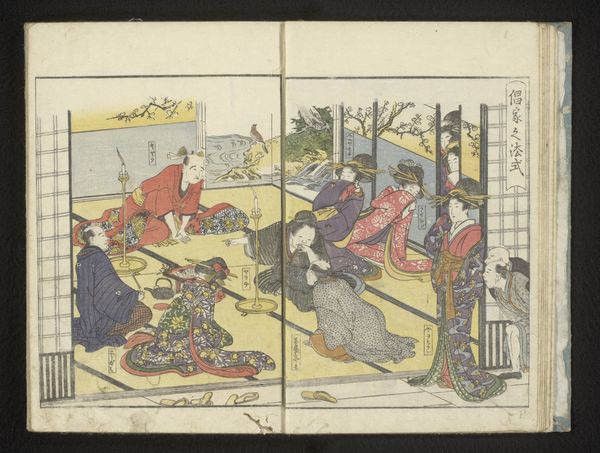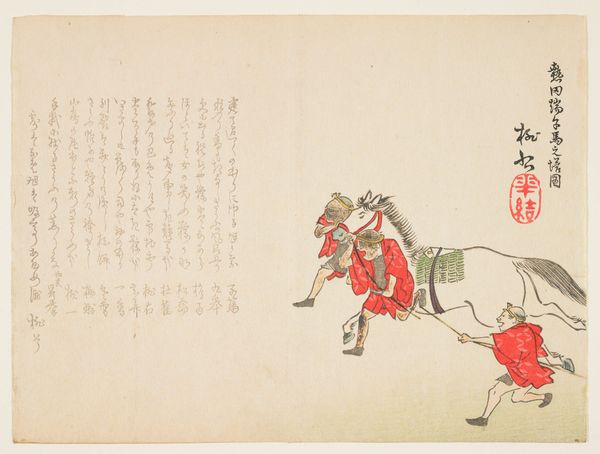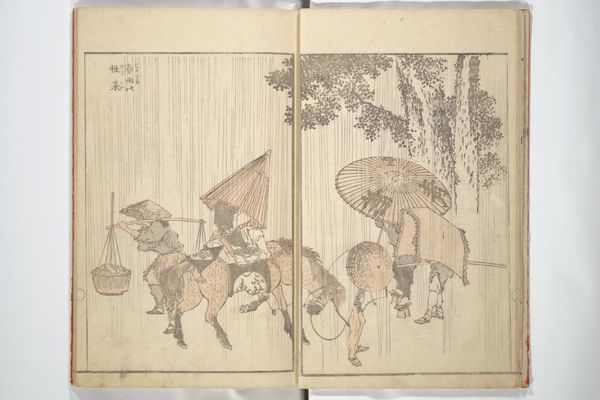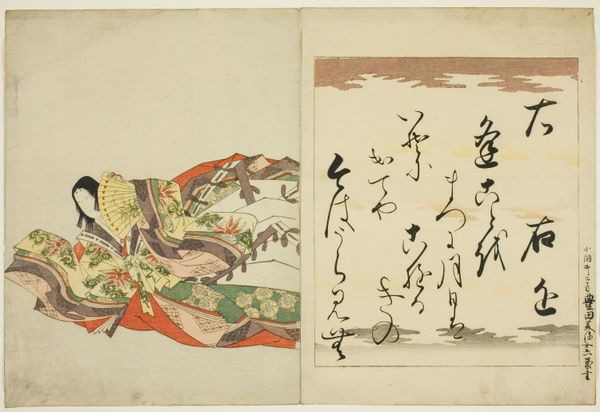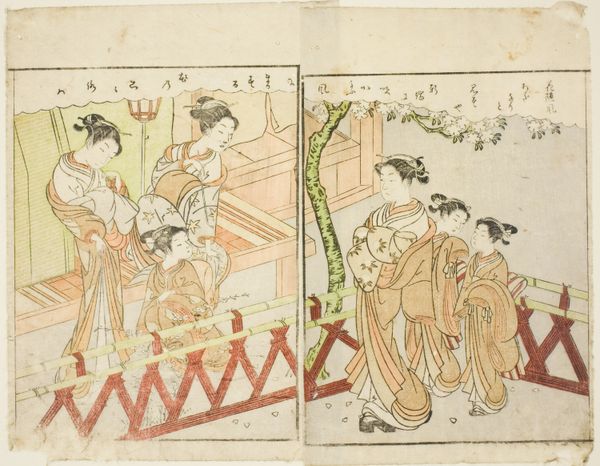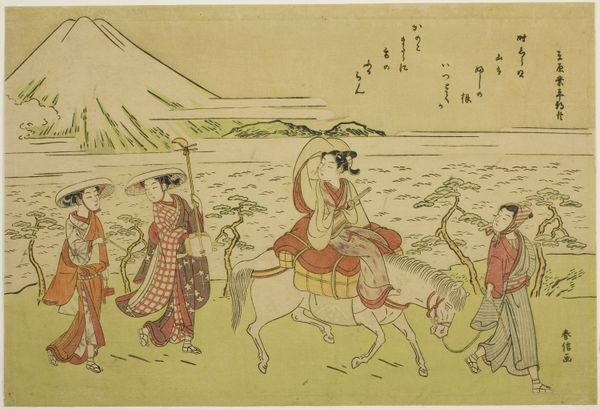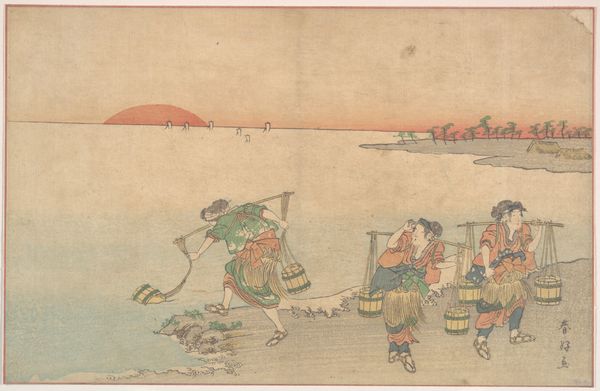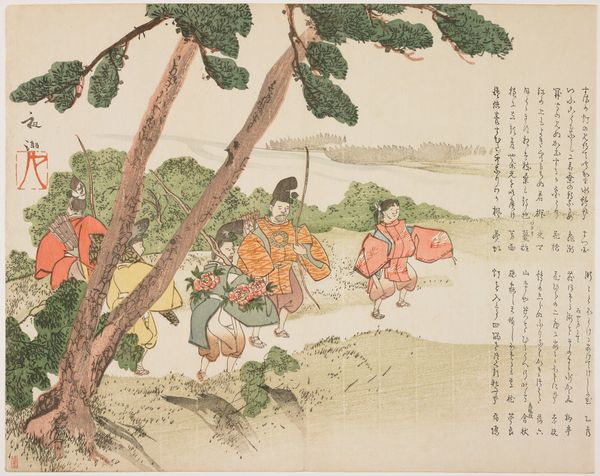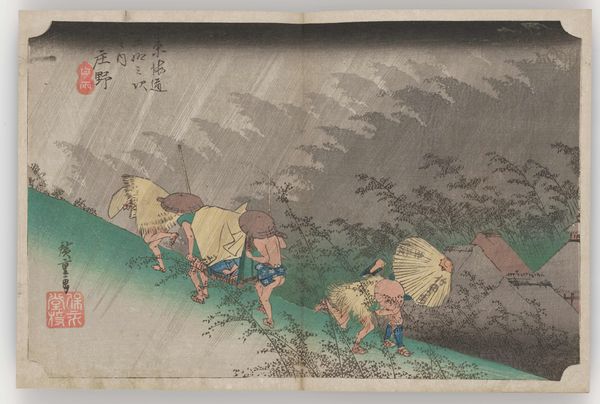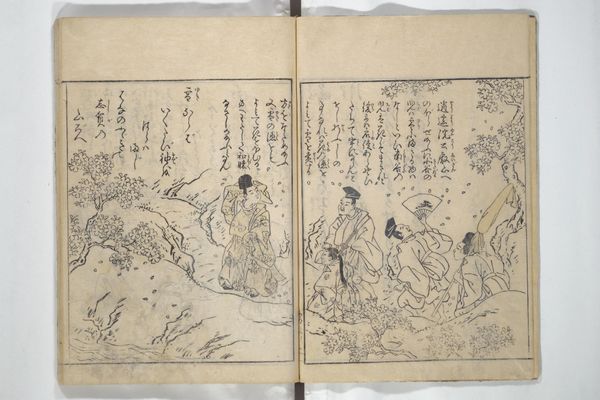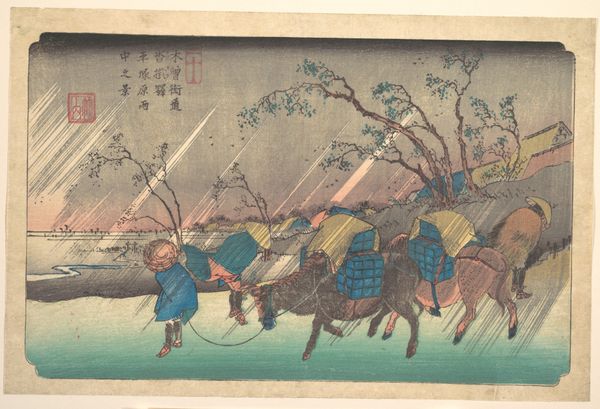
PIcture Book of the Foot and Peak of the Mountain 1802
0:00
0:00
drawing, print, woodblock-print
#
drawing
# print
#
book
#
asian-art
#
landscape
#
ukiyo-e
#
woodblock-print
#
horse
#
men
#
miniature
Dimensions: each: 8 7/8 × 6 1/8 in. (22.5 × 15.5 cm)
Copyright: Public Domain
Curator: This is a page from "Picture Book of the Foot and Peak of the Mountain" by Kitao Shigemasa, dating back to 1802. It's an example of ukiyo-e, a genre of Japanese woodblock prints and paintings. Editor: My first thought is that this feels incredibly serene despite all the motion implied by the horse mid-step, splashing through water! There is also a miniature aesthetic to it. Like I'm looking at a perfectly detailed toy. Curator: Ukiyo-e, which translates to "pictures of the floating world," often depicted landscapes and scenes of everyday life, which is pretty evident here. This miniature style, as you noted, became popular through printed books—circulating imagery that would otherwise have remained confined to the elite. The Metropolitan Museum acquired the work and this allowed these artworks to be shared with a larger global audience. Editor: Exactly! I think the water is fascinating; it feels both turbulent and still. Look at how each wave is so deliberately rendered. And it makes me wonder, who are these figures in the carriage, being carried so meticulously through the landscape? Is it the artist and some rich patron? Curator: More likely, it represents a scene from classical literature or popular narratives of the time. Ukiyo-e often drew upon these narratives to provide social commentary, subtly critiquing the power dynamics or values of the ruling classes. These were consumed by a rising merchant class seeking alternatives to courtly culture. The museum context shifts that relationship as it moves between different consumer classes. Editor: So, it's almost subversive, rendered in this delightful, miniaturized form? A political critique disguised as pastoral scene? That gives this artwork an unexpected depth! It looks almost whimsical on first impression, but has significant implications. Curator: Precisely. The miniature format belies the socio-political complexities embedded within. Examining this artwork through the lens of its historical consumption reveals the democratic function of printed material as a force in socio-economic movement. Editor: Makes you see it differently, doesn’t it? I’m left thinking about how art—even something as seemingly straightforward as a little picture in a book—can reflect profound truths. The power of images is always about their interpretation. Curator: Agreed. Analyzing art within a specific cultural and socio-economic context opens doors to understandings not apparent at first glance, inviting us to engage more fully with history through aesthetics.
Comments
No comments
Be the first to comment and join the conversation on the ultimate creative platform.
